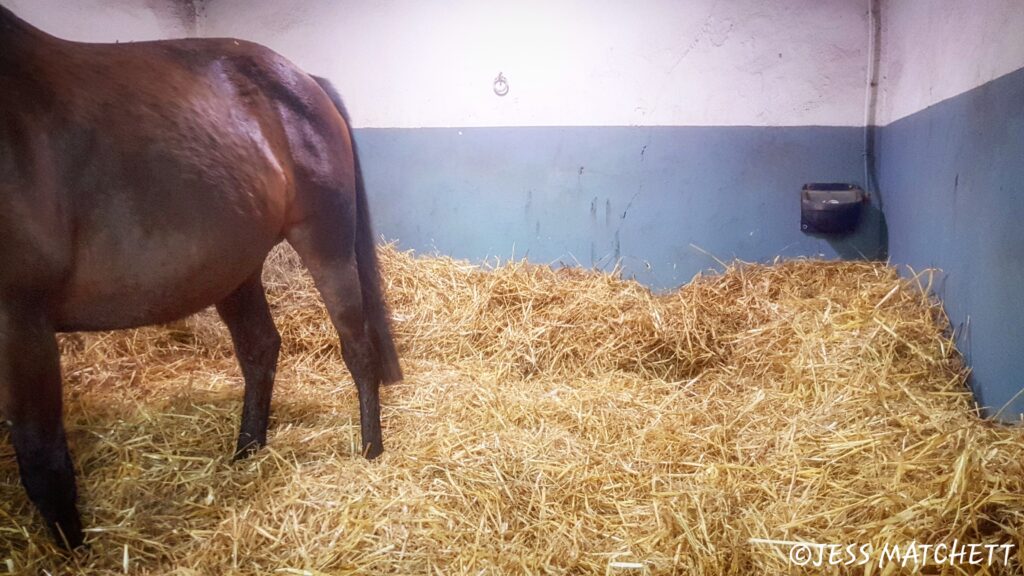Eleven months, give or take, of marking days and waiting, probably not too patiently, and then comes show time! The moment it is finally time for your mare to foal can be anything from hours of drama to a near miss…
If you are lucky, you have a mare who has followed all the classic signs of progression towards labour. If you’re really lucky, she’s an experienced broody, you have her foaling history, and she’s sticking to it. At the other end of the spectrum, you could have a maiden who has no clue what’s happening, or an old hand who likes to pull a sneaky and do it on her own.
No matter what the circumstances, if you have to take care of a pregnant mare, you have an obligation to have her under observation by some means, and you have an obligation to be there when she foals.
If you have a mare who starts to foal before you are right there, which can and does happen to the best of us, if you are vigilant, you shouldn’t miss it by more than 15 minutes at most. If everything is as it should be, that is perhaps unremarkable. If there is a problem, the sooner you can intervene, the higher the chances of a positive outcome.
It is said that the foal chooses the day, but the mare chooses the hour. The hormonal signal for labour comes from the foal, but mares have quite a unique ability to “back off” until they feel safe and secure–undoubtedly an ecological adaptation from their life as flight animals on the open range.
When the weather is colder, wetter and gloomier, and mares are generally stabled at night etc., they often choose unsociable hours to foal. As the weather improves, and we leave mares out on grass, you may be lucky enough to have your foal arrive in daylight, in the sunshine and under blue skies. There are no rules for when your mare will uncross her knees. However, as any experienced foal watcher will tell you, they sure do love the witching hours!
The first stage of labour is the phase of agitated behaviour and abdominal discomfort. This varies in severity and duration from mare to mare.
Every foaling attendant probably has their own routine once the mare is in active labour. All the mares I have attended have delivered their foals in a stable. My approach is to go into her sooner rather than later, put her head collar on, wrap her tail, and give her vulva, udder and back legs a wash with diluted veterinary disinfectant, such as chlorhexidine. I also usually fluff up her bed, and make sure she has fresh hay to pick at. Then I find it’s best to leave her be until she breaks waters. Breaking waters signals the start of the second phase of labour.
Some mares are quite obliging and will break waters whilst standing up, so it is quite obvious. Others will break whilst laying down. For someone who has never seen it before, one of the distinctions I draw attention to is that mares won’t usually deliberately straddle their hind legs and lift their tails out of the way to break waters like they would when urinating. Some mares are very subtle when they breakwaters. There is a typical rocking motion I’ve noticed when mares are trying to break waters laid down.
The people I have learned from have taught me that you are better off to check the foal’s presentation in the birth canal immediately upon the waters breaking. My feeling is that this particularly applies if you are inexperienced and unable to correct a malpresentation or dystocia yourself. Dystocias are more easily corrected before the foal progresses through the pelvis. If you do need help, you have a narrow window to get that help before a negative outcome becomes more and more likely.
If you are unsure, always err on the side of caution and call your vet.
A foal should present in the birth canal in a “diving” position, two front legs, one slightly in front of the other, with the muzzle and head aligned on top, and then the rest of the body followed by the hind legs. There are several ways a foal can be incorrectly presented, from a leg behind the head to coming sideways or bum first. Some dystocias can be fairly easily corrected, whereas the worst cases, such as a breech presentation, can take extreme intervention–a surgical Caesarean section.
The general rule of thumb is that once the waters break, you should be seeing progression to the foal emerging within 20–30 minutes. Ten minutes of active pushing without progress is a red flag.
I cannot stress enough how imperative it is to be there, to check presentation, and to keep an eye on the progression of time.
Timely intervention can literally mean the difference between life and death for your mare and/or foal.
It is your responsibility to do your best to ensure a safe outcome for both. Unfortunately, it is not always possible, and nature does not guarantee a happy ending, but if you are not there, you have no hope of influencing the outcome.

In my next article, I’ll continue with stage 2 of labour, and detail stage 3.


Share
Your subscription is 100% Free for our first year, No credit card details required.

The Judging Concerns That Keep Coming Back — And Why They Can’t Be Ignored Anymore We didn’t make it to

There are few sporting events that live up to the hype. Wimbledon? Too many strawberries. Cheltenham? Too many suits. But

British Veterinary Association publishes full response to Competition and Markets Authority’s proposed remedies for veterinary market for household pets. The